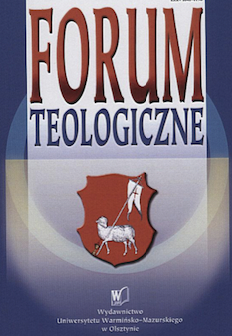WIZUALIZACJA DZIEJÓW MANDYLIONU W TRADYCJI WSCHODNIOCHRZEŚCIJAŃSKIEJ ZE SZCZEGÓLNYM UWZGLĘDNIENIEM IKON ROSYJSKICH
Visualization of the history of the mandylion in the Eastern Christian tradition with particular emphasis on Russian icons
Author(s): Grażyna Kobrzeniecka-SikorskaSubject(s): Fine Arts / Performing Arts, Theology and Religion
Published by: Wydawnictwo Uniwersytetu Warmińsko-Mazurskiego w Olsztynie
Keywords: icon; mandylion; Byzantium; Russia
Summary/Abstract: According to tradition, the prototypes of icons were created in a supernatural way, and were not made by human hand (Greek a-cheiro-poietos). These include the icons of the Mother of God (image from Lydda and a portrait made of nature by Saint Luke under the inspiration of the Holy Spirit), and above all the image of Christ reflected by himself on the fabric, from the Greek language called mandylion. In the later Orthodox tradition, the mandylion of Edessa remained an acheiropoietic image, but in the pre-iconoclastic period there were many such images of Christ. Until the sixth century, the Palladium of the Byzantine Empire was fabric from Kamuliana. Sources mention the mandylion of Edessa only in the sixth century. A cult is closely connected with the story, which in time grew into various facts. The synthesis of all legendary stories taken from various sources is the Tale of the Mandylion of Edessa, which was created after the transfer of the sacred fabric from Edessa to Constantinople (944). It became the basis for visualizing the legendary history on icons. The earliest example of the story’s illustration is in the Sinai triptych from the 10th century, the next 10 scenes placed on the cover of the mandylion from the church of San Bartolomeo degli Armeni in Genoa from the 14th century.. From the 17th century, icons of the mandylion with history in Russia were painted. In the 19th century, the history of the mandylion became a separate topic of icons.Throughout its history, the mandylion was embroiled in various political ideologies, but above all, as an image that was also a contact relic, it served a protective function, it was a gift of grace given to man by God Himself. The history of the mandylion is the history of grace, from the grace of healing King Abgar and the protection of his kingdom and inhabitants, to the grace of protection and numerous healings from his replicas and numerous imitations.
Journal: Forum Teologiczne
- Issue Year: 2020
- Issue No: 21
- Page Range: 149-167
- Page Count: 19
- Language: Polish

